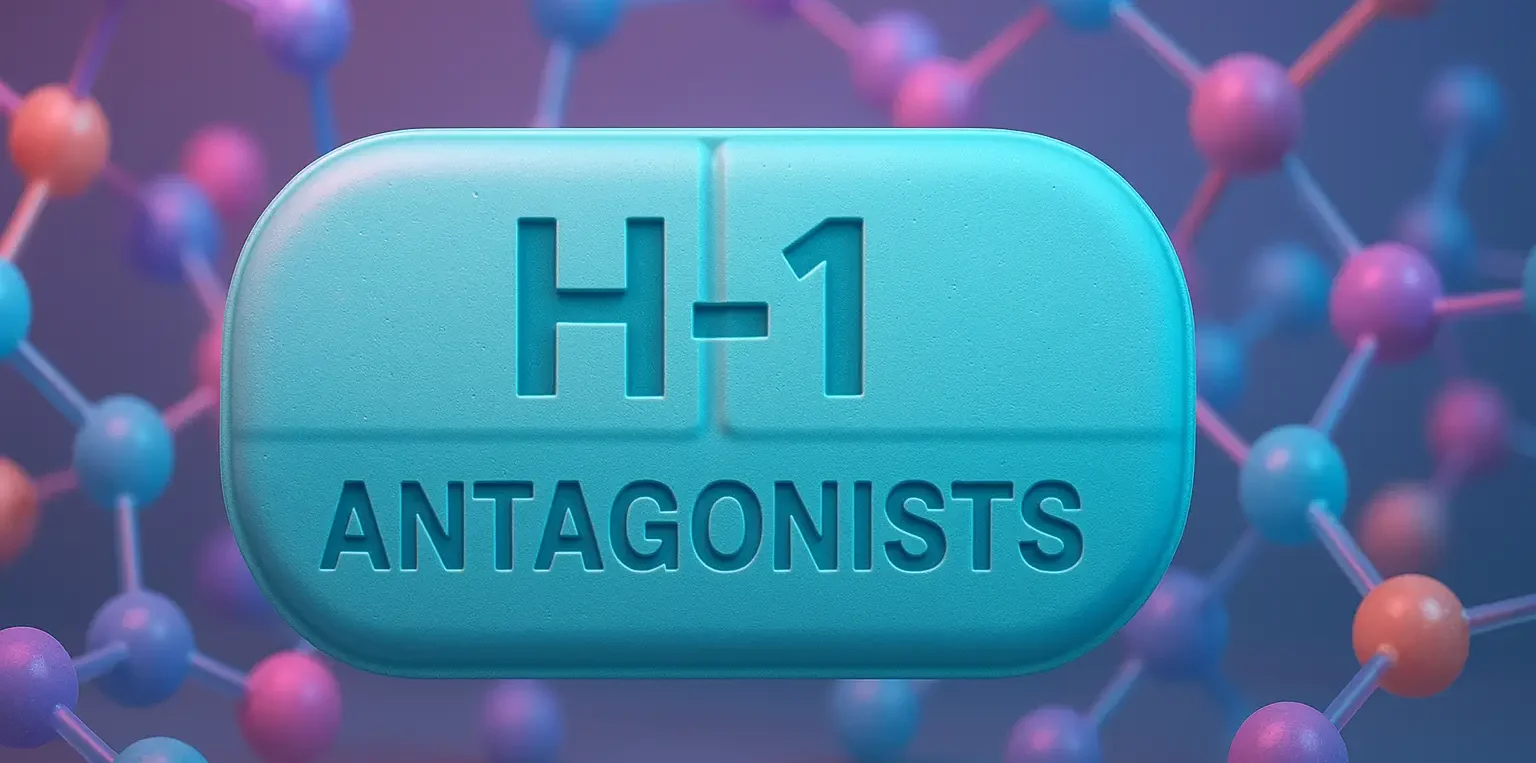Discover how H-1 antagonists work to treat allergies by blocking histamine receptors and explore their types and common uses.
- H1 antagonists, also known as H1 blockers or antihistamines, are a class of drugs that inhibit the action of histamine at the H1 receptor sites.
- They are widely used to treat various allergic conditions and are classified into three main categories:
- First-Generation H1 Antagonists
- Second-Generation H1 Antagonists
- Mast Cell Stabilizers
Medical Uses of H-1 Antagonists
- Allergic Rhinitis: Reduces symptoms like sneezing and nasal congestion.
- Allergic Conjunctivitis: Alleviates itching and redness in the eyes.
- Urticaria: Treats hives and skin rashes.
- Angioedema: Reduces swelling beneath the skin.
- Pruritus: Relieves itching from atopic dermatitis and insect bites.
- Nausea and Vomiting: Some antihistamines have antiemetic properties.
- Sedation: First-generation antihistamines are used as sleep aids due to their sedative effects.
Side Effects
- Sedation and Drowsiness (especially with first-generation agents)
- Blurred Vision
- Dry Mouth
- Constipation or Diarrhea
- Nausea and Vomiting
- Increased Appetite and Weight Gain
- Anxiety or Insomnia
- Dry Cough
Classification
-
First-Generation H1 Antagonists
Characteristics:

-
- Sedative Effects: Easily cross the blood-brain barrier, causing drowsiness.
- Anticholinergic Activity: Block muscarinic acetylcholine receptors, leading to side effects like dry mouth and blurred vision.
- Affordable and Widely Available: Oldest class of antihistamines.
Mechanism of Action:
-
- Histamine Blockade: Competitively inhibit histamine binding at H1 receptors.
- G-Protein Coupled Receptor Inhibition: Prevent activation of phospholipase C, reducing inositol phosphate (IP₃) and diacylglycerol (DAG) formation.
- Reduced Intracellular Calcium: Decreases the release of inflammatory mediators.
Functions:
-
- Decrease Vascular Permeability: Reduces edema and swelling.
- Alleviate Pain and Headache: Minimizes discomfort associated with allergies.
- Prevent Hypotension: Stabilizes blood pressure by inhibiting vasodilation.
-
Second-Generation H1 Antagonists
Characteristics:
-
- Non-Sedative: Less likely to cross the blood-brain barrier, resulting in minimal sedation.
- Selective Action: More specific to peripheral H1 receptors.
- Hydrophilic Nature: Limits central nervous system penetration.
Mechanism of Action:
-
- Similar to first-generation antihistamines but without significant central nervous system effects.
Functions:
-
- Alleviate Allergy Symptoms: Effective in treating allergic rhinitis, conjunctivitis, and urticaria without causing drowsiness.
-
Mast Cell Stabilizers
Characteristics:
-
- Prevent Histamine Release: Stabilize mast cell membranes, inhibiting degranulation.
- Anti-Inflammatory Activity: Reduce the release of other inflammatory mediators.
Mechanism of Action:
-
- Calcium Channel Blockade: Inhibit IgE-mediated calcium influx into mast cells.
- Prevent Degranulation: Without intracellular calcium, histamine vesicles cannot fuse with the cell membrane.
Click Here to Watch the Best Pharma Videos

